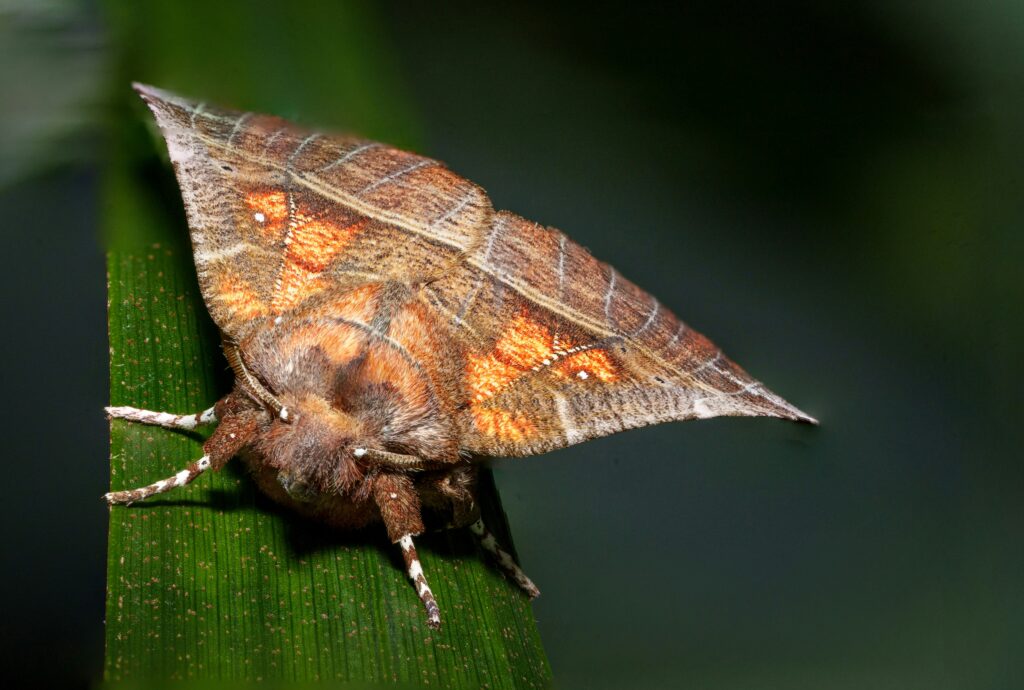The darkness of night transforms our world into a different realm, one where certain insects thrive while humans slumber. The nocturnal insect world represents a fascinating ecological adaptation that has evolved over millions of years. These night-dwelling creatures have developed remarkable specializations that allow them to navigate, hunt, mate, and survive in conditions that would render their daytime counterparts helpless. From the moths that flutter around your porch light to the mysterious bed bugs that may visit while you sleep, nocturnal insects have mastered the art of darkness. This exploration into the shadowy world of night insects reveals not only their biological adaptations but also explains why you might encounter these creatures during your most vulnerable hours.
The Evolutionary Advantage of Nighttime Activity
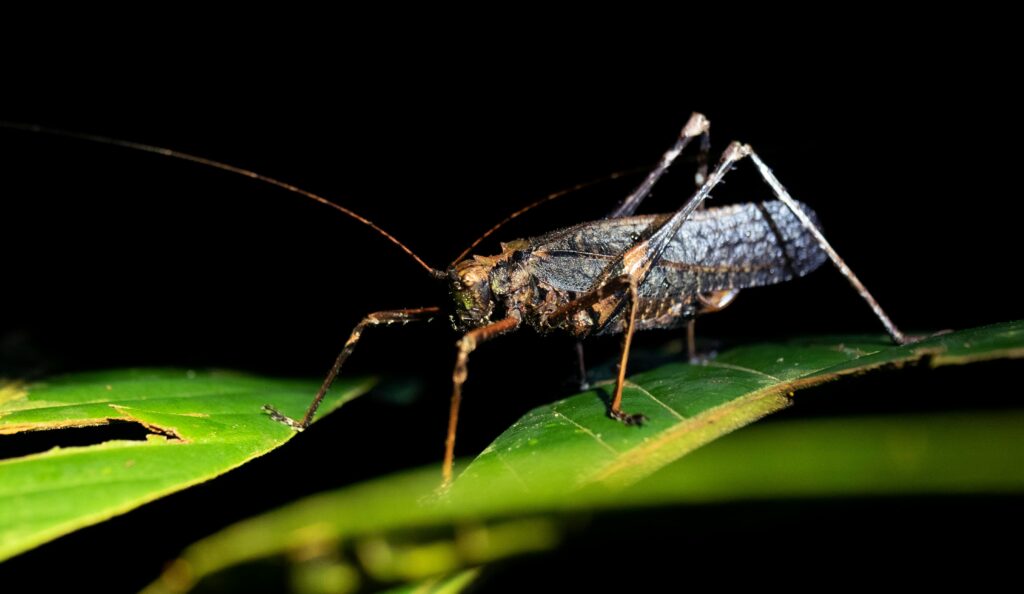
Nocturnal behavior in insects represents a brilliant evolutionary strategy that has developed over millions of years. By operating during the night, many insects effectively avoid competition with diurnal (day-active) species that occupy similar ecological niches. This temporal partitioning allows nocturnal insects to access food resources and habitats that would otherwise be overcrowded or depleted during daylight hours. Additionally, the cover of darkness provides significant protection from visual predators like birds, which rely heavily on sight for hunting. Some research suggests that the very first insects may have been nocturnal, developing this habit as a way to avoid the harsh ultraviolet radiation of the primitive Earth when atmospheric ozone layers were still forming. This primordial adaptation has persisted and specialized in many insect lineages, creating the diverse nocturnal insect populations we see today.
Biological Adaptations for Night Living

Nocturnal insects possess remarkable biological adaptations that enable them to thrive in low-light conditions. Perhaps most impressive are their visual systems, with many night-active insects having compound eyes with specialized structures called superposition eyes that increase light sensitivity up to 1,000 times compared to daytime insects. Moths, for instance, have eyes that contain light-trapping structures that maximize the capture of even the faintest moonlight. Beyond vision, many nocturnal insects have developed extraordinarily sensitive chemoreceptors and mechanoreceptors to detect chemical signals and air vibrations, compensating for limited visual information. Their antennae often feature elaborate structures that serve as powerful sensory organs, detecting pheromones from potential mates or prey from remarkable distances. Some nocturnal insects like crickets and katydids have even evolved specialized hearing organs that can detect the ultrasonic calls of predatory bats, allowing them to take evasive action when threatened.
Temperature Regulation and Nocturnal Advantages
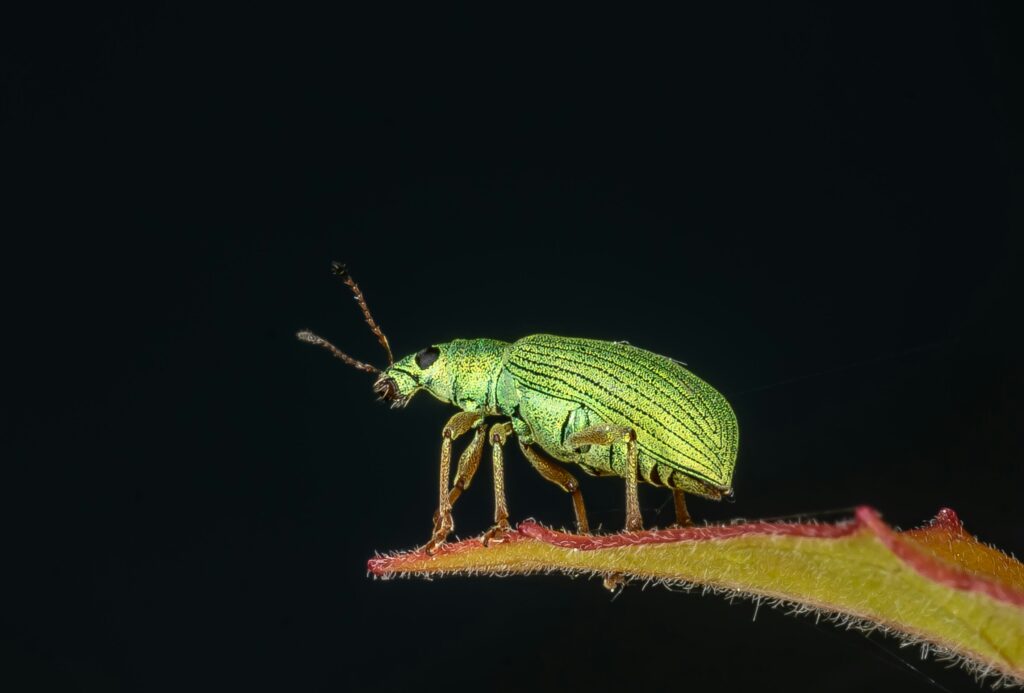
Temperature plays a crucial role in why many insects prefer the night. Daytime heat can be particularly stressful for insects, which are ectothermic (cold-blooded) and unable to internally regulate their body temperature. By becoming active during cooler nighttime hours, these insects can avoid potentially fatal overheating and dehydration that would occur under the direct sun. Desert-dwelling insects especially benefit from this strategy, as nighttime temperatures can be 20-30 degrees Fahrenheit lower than daytime highs. Additionally, the higher relative humidity at night helps prevent water loss through the insects’ exoskeletons, a critical factor for their survival. Some nocturnal insects have also developed specialized metabolic adaptations that allow them to function efficiently at lower temperatures, giving them an edge in their nighttime environment while conserving precious energy resources.
Predator Avoidance Through Darkness
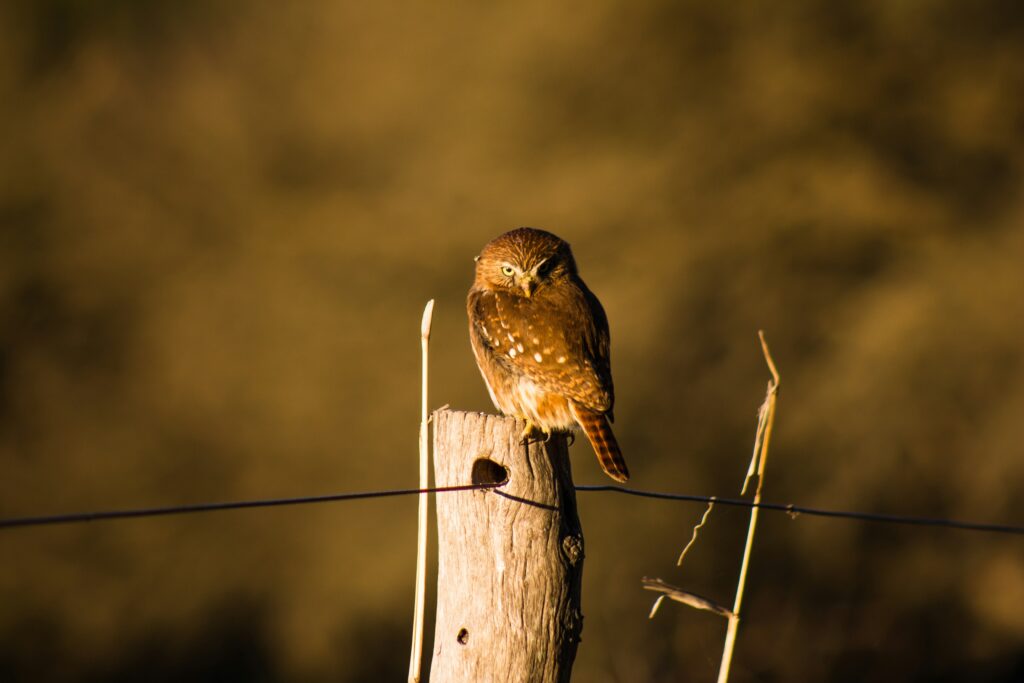
One of the most significant advantages of nocturnal behavior is protection from predators that hunt by sight. Many insect-eating birds, reptiles, and mammals are diurnal and rely primarily on vision to locate prey, making them less effective hunters after sunset. The cover of darkness provides nocturnal insects with a natural shield against these visual predators, significantly increasing their chances of survival. However, this strategy isn’t foolproof, as nocturnal insects must contend with specialized night predators like bats, which use echolocation rather than vision to hunt. To counter these threats, some nocturnal insects have developed remarkable defenses, such as the ability to detect ultrasonic bat calls or execute evasive flight maneuvers including power dives, spirals, or even playing dead mid-air. Moths in the family Arctiinae can even produce their own ultrasonic clicks that may jam bat sonar or warn of their unpalatability.
The Mystery of Nocturnal Navigation
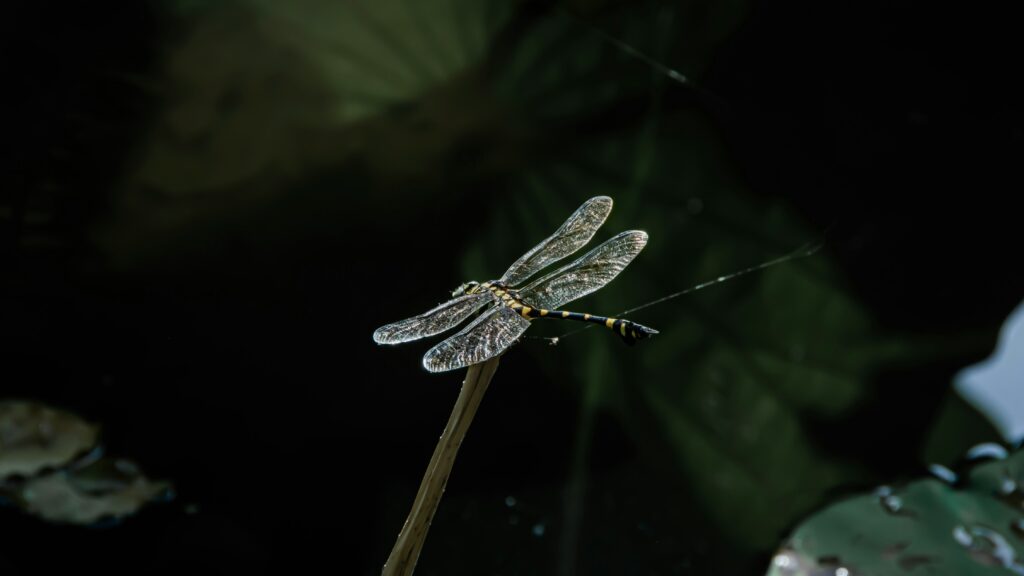
Navigating in darkness presents unique challenges that nocturnal insects have overcome through fascinating adaptations. Many nocturnal flyers, including moths and certain beetles, use celestial navigation, orienting themselves according to the moon and stars. This ancient navigation system works by maintaining a constant angle to light sources, allowing for remarkably accurate travel even in dim conditions. Some species, like dung beetles, have been proven to use the Milky Way as a navigational reference when moving in straight lines. Closer to the ground, nocturnal insects often rely on landscape features detected through subtle variations in light reflection, air currents, or even the Earth’s magnetic field. Cockroaches, notorious midnight kitchen visitors, use their antennae to detect air currents and vibrations, creating mental maps of their environments that allow them to scurry quickly to safety when lights suddenly illuminate their nighttime foraging.
Attraction to Artificial Light Sources
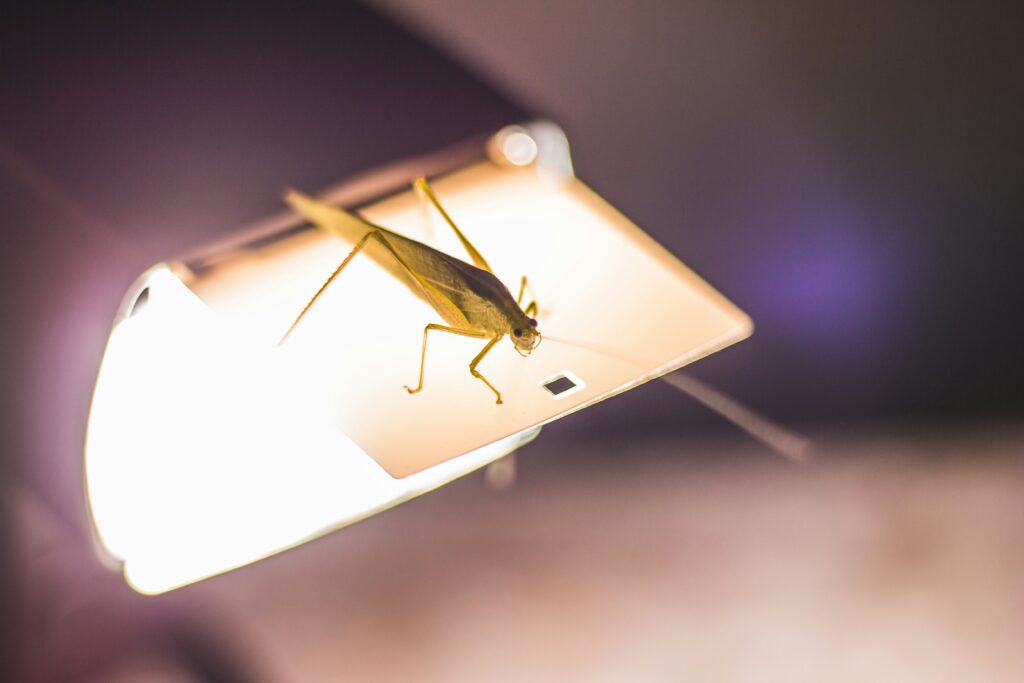
The phenomenon of insects swarming around porch lights and streetlamps represents one of the most visible examples of how human technology disrupts nocturnal insect behavior. This attraction, called positive phototaxis, occurs because artificial lights confuse the navigational systems of many nocturnal insects. Moths and other night-flying insects evolved to navigate by maintaining a constant angle to distant light sources like the moon. When they encounter a nearby artificial light, they attempt to maintain this same angle, which forces them into an ever-tightening spiral toward the light source. Beyond simple disorientation, artificial lighting creates what ecologists call “ecological traps” – situations where evolutionary adaptations lead animals into harmful circumstances. Insects drawn to lights become easy targets for predators, exhaust themselves flying in circles, fail to find mates, and may die from collision or heat exposure. Light pollution has become so significant that it’s considered a major factor in global insect population declines, disrupting natural behaviors that have evolved over millions of years.
Bed Bugs: Nocturnal Blood Feeders

Among the most notorious nocturnal visitors to human dwellings are bed bugs (Cimex lectularius), insects perfectly adapted for nighttime feeding on sleeping hosts. These small, flat insects have evolved a specialized strategy of hiding in cracks and crevices near sleeping areas during daylight hours, emerging only when they detect the carbon dioxide, body heat, and other chemical cues that signal a host is present and likely asleep. Their feeding typically occurs between 2:00 and 5:00 AM when human sleep is deepest and movement minimal. Bed bugs inject anesthetic compounds and anticoagulants through their specialized mouthparts, allowing them to feed for 5-10 minutes without detection. Their strictly nocturnal behavior developed as an adaptation to feeding on cave-dwelling bats millions of years ago, long before they adapted to human hosts. This ancient evolutionary strategy has made them particularly difficult to detect and eliminate, as their activity coincides precisely with when humans are least aware of their surroundings.
Mosquitoes: Nighttime Hunting Strategies
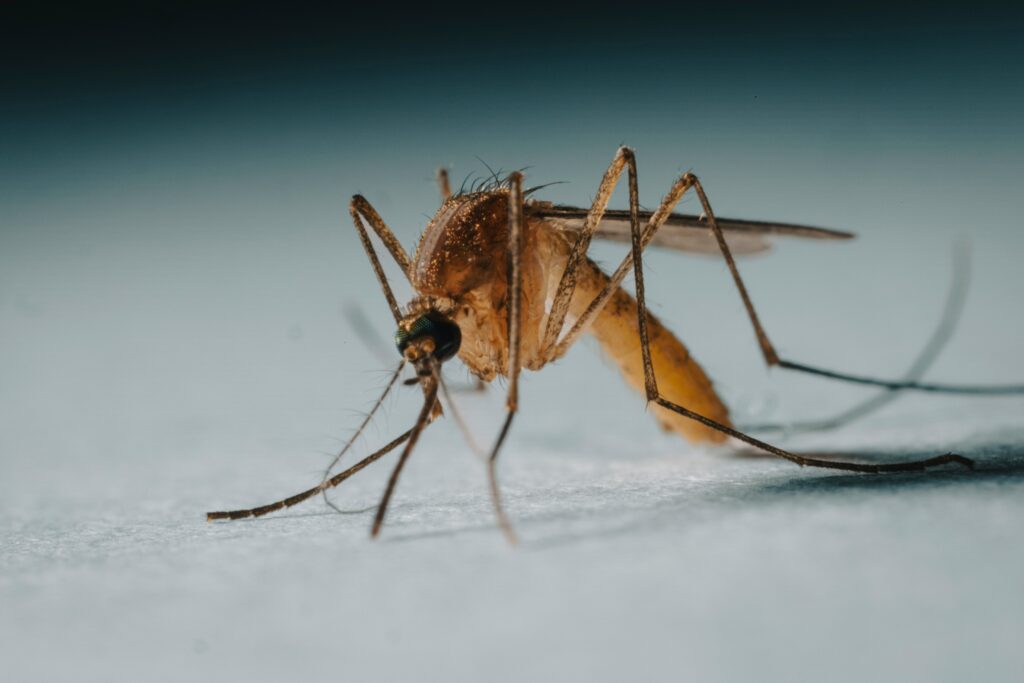
Many mosquito species have evolved to be primarily nocturnal or crepuscular (active at dawn and dusk), developing sophisticated hunting strategies that make them efficient night feeders. Female mosquitoes, which require blood meals for egg production, locate potential hosts through an impressive array of sensory capabilities specifically adapted for darkness. They can detect carbon dioxide from human breath at distances up to 50 feet, sense body heat through specialized receptors, and identify skin chemicals like lactic acid that signal a suitable host. Different mosquito species have adapted to specific feeding times – Anopheles mosquitoes (which transmit malaria) typically feed late at night, while Aedes mosquitoes (vectors for dengue and Zika viruses) prefer dawn and dusk. These specialized feeding windows evolved to coincide with times when their preferred hosts are least active and defensive, maximizing feeding success while minimizing risk. Their whining flight sound, actually the frequency of their wingbeats, tends to be lower pitched at night, making it harder for human ears to detect their approach during sleep.
Cockroaches: Masters of Midnight Foraging

Cockroaches represent perhaps the ultimate nocturnal insect success story, having perfected the art of nighttime foraging in human environments. These resilient insects have evolved extreme photosensitivity, with special neurons that trigger an immediate escape response when light is detected, explaining their characteristic scurrying when kitchen lights are switched on unexpectedly. Their nocturnal lifestyle is supported by remarkable sensory capabilities, including antennae that can detect air movements as subtle as 0.003 mph and chemoreceptors capable of identifying food sources from considerable distances in complete darkness. Cockroaches time their foraging activities to periods of minimal human activity, typically emerging 4-6 hours after sunset when houses are quietest. Their flattened bodies – an adaptation that originally evolved for squeezing into rock crevices – serve them perfectly for accessing the narrow spaces under appliances and inside walls of human dwellings. This nocturnal behavior pattern has remained essentially unchanged for millions of years, predating human existence and proving remarkably adaptable to our modern living spaces.
The Nighttime Pollinator Shift

While bees and butterflies receive most of the attention for pollination services, a critical ecological shift occurs after sunset when nocturnal insects take over this essential role for many plant species. Night-blooming plants like evening primrose, moon flowers, and night-blooming jasmine have co-evolved with moths and other nocturnal insects, developing pale colors that reflect moonlight, strong fragrances that carry farther in the still night air, and nectar production timed to peak after dark. Hawk moths (Sphingidae), with their hovering abilities and long proboscises, perform pollination services similar to hummingbirds but exclusively at night. Some bat-pollinated plants also receive supplementary pollination from nocturnal insects. This temporal niche separation allows these plants to avoid competition for pollinators with day-blooming species. Research has shown that nocturnal pollination networks are particularly vulnerable to disruption from artificial lighting, which can reduce pollination success by up to 62% in affected areas by disorienting the insects or attracting them away from flowering plants.
Fireflies: Bioluminescent Night Communication
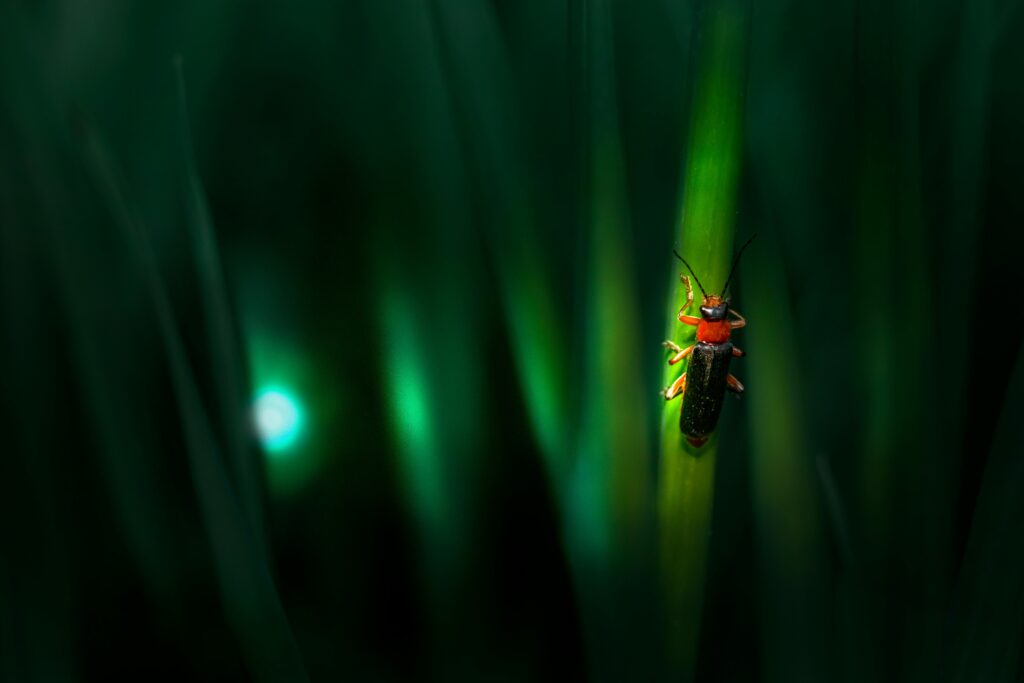
Fireflies (family Lampyridae) represent one of nature’s most magical examples of nocturnal insect adaptation, having evolved complex bioluminescent signaling systems that function exclusively at night. These beetles produce light through a chemical reaction involving the compound luciferin and the enzyme luciferase in specialized light-producing organs in their abdomens. The primary purpose of these flashing patterns is sexual communication, with each of the approximately 2,000 firefly species having unique flash patterns that allow individuals to identify potential mates of their own species in the darkness. Males typically fly and flash while females respond from perches on vegetation with precisely timed response flashes. Some predatory female fireflies have evolved to mimic the response patterns of other species, luring males close enough to capture and consume them. The darkness is essential for firefly communication, as their relatively faint light signals would be ineffective against daylight backgrounds. Light pollution from human sources severely disrupts these communication systems, contributing to alarming declines in firefly populations worldwide.
The Ecological Importance of Nocturnal Insects
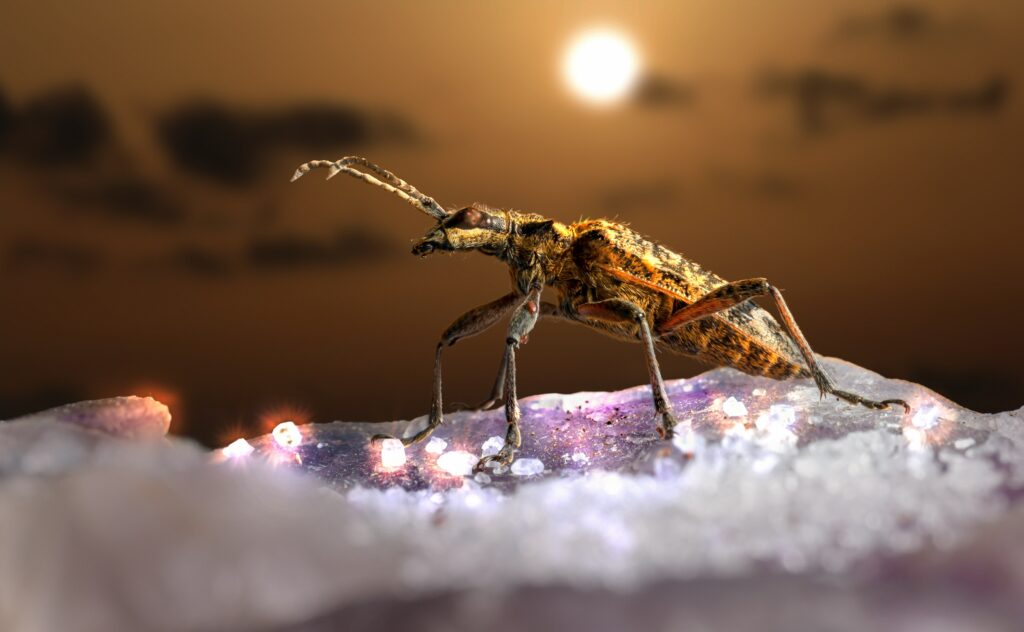
Nocturnal insects play critical but often overlooked roles in maintaining healthy ecosystems, performing much of their important work while the human world sleeps. They serve as essential food sources for many night-active predators including bats, nocturnal birds like owls and nightjars, and many amphibians and reptiles that would struggle to survive without this reliable food source. Many decomposer insects operate primarily at night, breaking down organic matter and recycling nutrients back into the soil under the cover of darkness. Nocturnal insects also provide valuable pest control services, with predatory species like ground beetles hunting agricultural pests that would otherwise damage crops. The temporal partitioning between day and night-active insects increases the overall ecological efficiency of insect communities, allowing more species to coexist by reducing direct competition for resources. Research increasingly shows that disruption of nocturnal insect communities through light pollution, habitat loss, and pesticide use has cascading effects throughout ecosystems, affecting everything from soil health to bird populations.
Coexisting with Our Nocturnal Visitors

Understanding the biological imperatives behind nocturnal insect behavior can help humans develop more effective and environmentally responsible ways to coexist with these creatures. For unwanted indoor visitors like cockroaches and bed bugs, integrated pest management approaches that focus on eliminating access points and food sources rather than broadcast pesticide application can effectively control populations without harmful environmental impacts. Reducing unnecessary outdoor lighting or switching to insect-friendly lighting options, such as amber LEDs or low-pressure sodium lights that produce less attractive wavelengths, can significantly decrease the “vacuum cleaner effect” that draws insects away from their natural habitats. Creating designated dark areas in gardens with native night-blooming plants can support healthy nocturnal insect populations while keeping them away from living spaces. Rather than viewing all nocturnal insects as pests, recognizing their ecological importance and fascinating adaptations can lead to a more balanced approach that protects both human interests and these ancient, highly specialized creatures that have mastered life in the darkness.
Conclusion
The nocturnal world of insects represents one of nature’s most remarkable evolutionary success stories. Through specialized sensory systems, unique hunting strategies, and perfect timing, these creatures have mastered the art of thriving in darkness. While some may enter our homes as unwanted guests, their nighttime activities fulfill crucial ecological roles that maintain balanced ecosystems. As humans increasingly illuminate the night with artificial lighting, many of these ancient adaptations face new challenges, disrupting behaviors that have been refined over millions of years. By understanding why insects embrace the darkness – whether to avoid predators, regulate temperature, or reduce competition – we gain insight into not just their biology but also how we might better coexist with these remarkable creatures that share our world but operate on an entirely different schedule.

